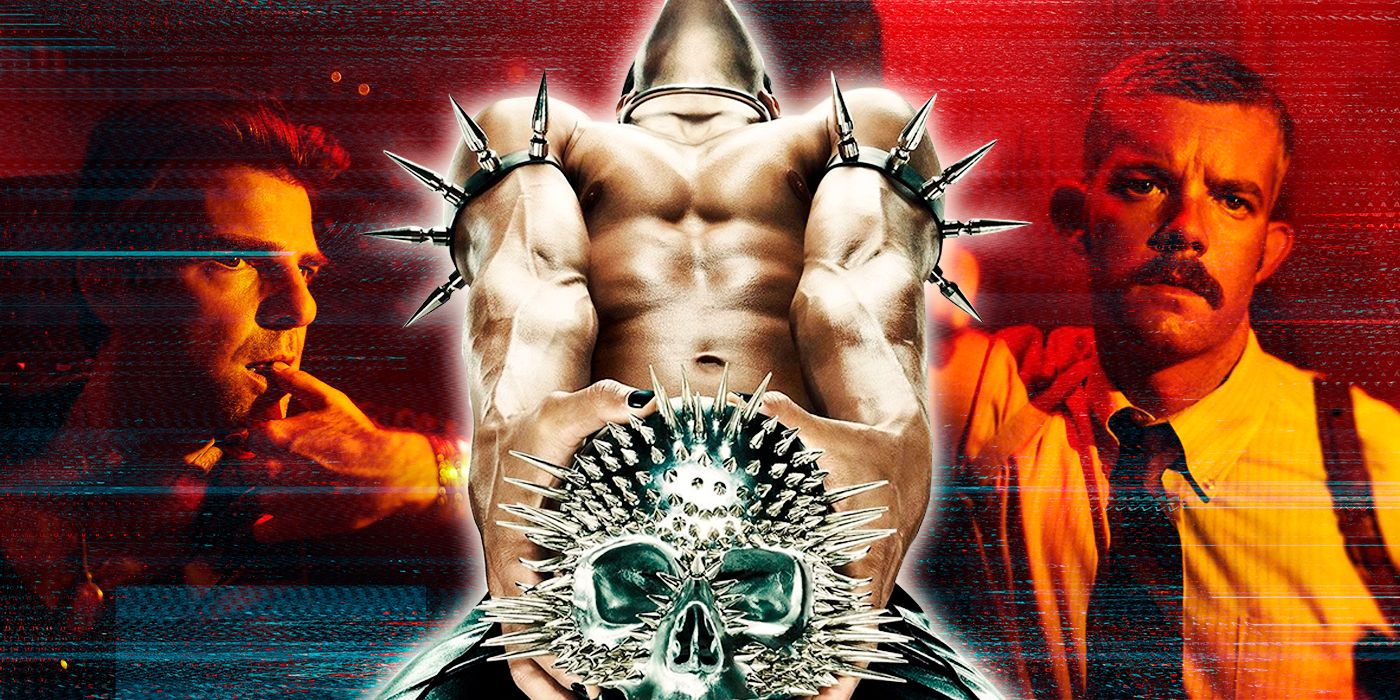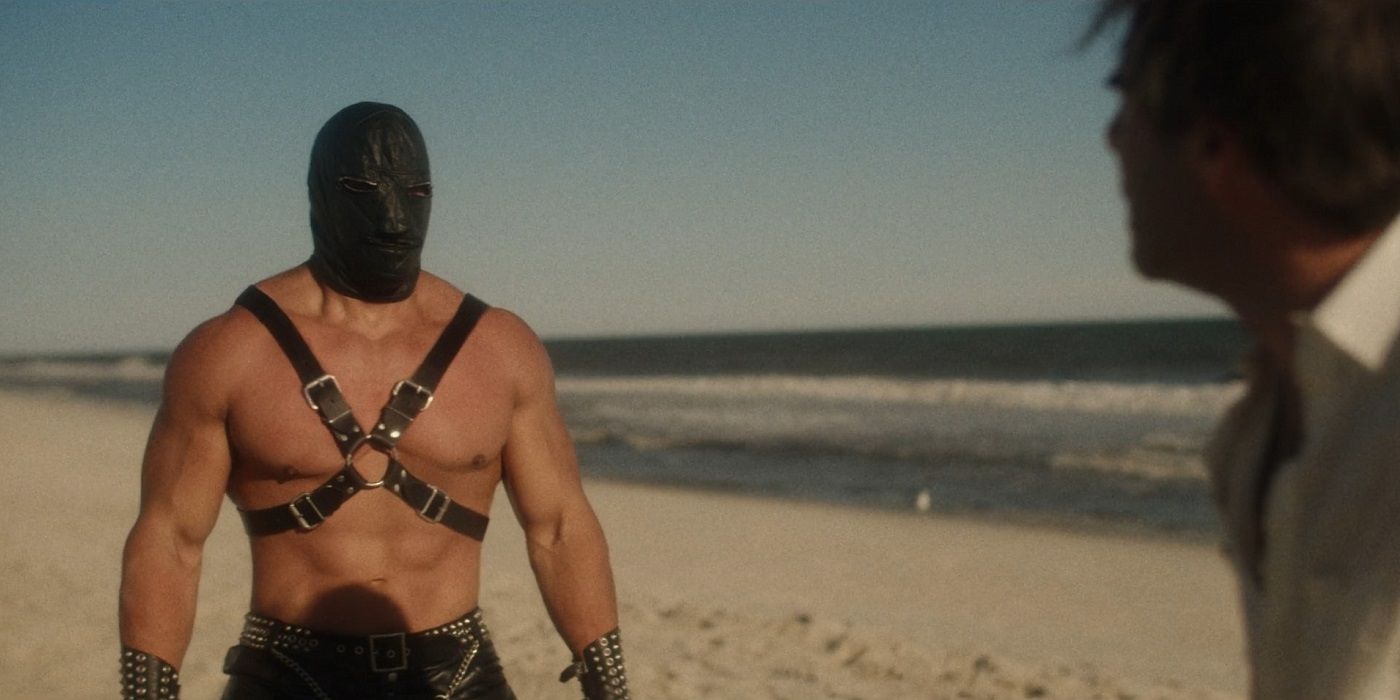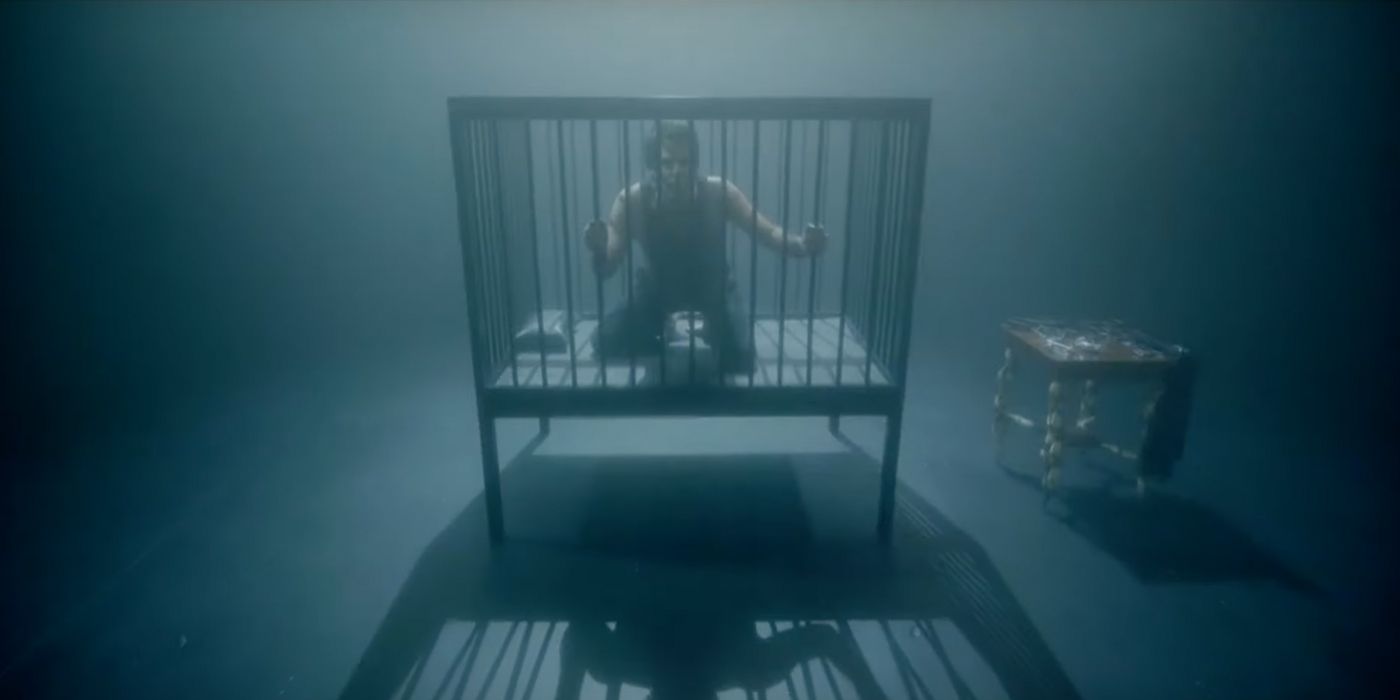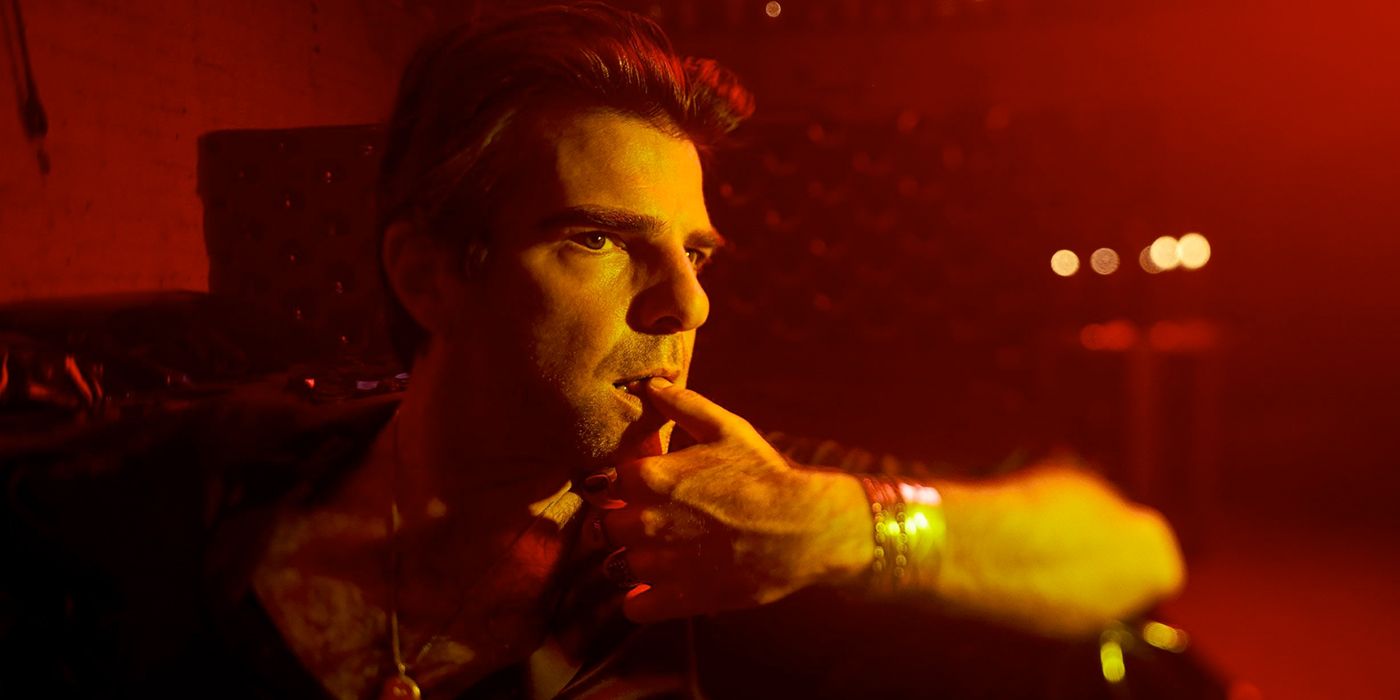
AHS: NYC hasn’t been anything like previous seasons, with its focus on a more grounded, detective-style approach as the major stories of the Mai Tai Killer and the illness remained largely separate. While fans were undecided about the presentation, they were most vocal about the exploitation of the AIDS pandemic. The show personifies the deadly virus as a burly man in BDSM leather as he haunts the characters. With the deaths within the gay community on the show — and the literal manifestation of death looming over them — some viewers felt like this personification went too far, and exploited the LGBTQIA community. While this position is understandable, exploitation was the actual point.
AHS’s Exploitation was Integral to the Genre

At the risk of sounding like fake praise, AHS’s exploitation factor wasn’t just important to the season, but topical as well. Exploitation has a negative connotation, but it’s also the act of making use of, and benefiting from, resources. AHS: NYC focuses on the AIDS outbreak in New York City’s gay community in the 1980s, through the lens of its members. To do so effectively, a majority of the series had to show the anxiety and loneliness of their collective experience during that time.
AHS captures those experiences in two seemingly different ways. First is through the Mai Tai Killer, known for ordering a Mai Tai for his victims before he dismembered them. Although evidence is presented, and an entire population panics, the police and the media refuse to recognize it throughout the season. Men are being murdered, and the community is suffering in silence due to their sexuality. Even within the police force, closeted homosexuals are forced to take the law into their own hands in order to save themselves. Unfortunately, even with their death, a looming figure haunts the cast in an even more malignant way.
The second way the gay community’s collective experience during the AIDS pandemic is explored is through the disease itself. The illness is primarily affecting men, though a woman was killed by it. Akin to the Mai Tai Killer, the disease attacked a specific demographic, and officials in medical fields did little to help raise awareness or help. Men in the community died in droves almost as silently as Big Daddy lurked in the shadows. The community tried to speak out, and even had a mouthpiece in reporter Gino Barelli. But they weren’t heard, and were all eventually killed.
AHS Highlighted a Disturbing Reality of Apathy

By focusing on the effects of the murders and the disease through the early-1980s gay community, American Horror Story: NYC showed a kind of horror the anthology series has never seen: apathy. Regardless of what happened on the show in terms of death or torture, the real horror was that the people who could help the community refused to do so. People dying in their community almost became expected within the episodes, and each character knew it was a matter of time before their own time arrived. As far as exploitation is concerned, this isn’t too far from real life.
NYC’s main motifs of murderers and diseases targeting the gay population are pulled from history. Serial killers such as Jeffrey Dahmer targeted gay men, and when law enforcement had a chance to save a young man’s life, they didn’t. Numerous murders and targets of the LGBTQIA community happen with no end in sight. AIDS is remains a concern within the gay community, and it affects all walks of life. However, a stigma remains. It’s an unfortunate situation, but the talk of exploitation in a negative way is puzzling, because AHS has borrowed from real life before.
In American Horror Story: 1984, Richard Ramirez, aka the Nightstalker, was introduced into the series, although he killed 15 people. In Murder House, the Black Dahlia murder was presented onscreen, but it wasn’t viewed as exploitation. Both real-life events reflected the themes and motifs that each season represented. Given what came before, it raises the question of why NYC was branded with the negative connotation of exploitation. The simple answer is because these atrocities are still happening.
AHS: NYC’s Ambiguous Ending Reflects Today’s Climate

Throughout AHS: NYC, a psychic predicted death for its characters. It started off one by one, then became a trickle until it transformed into a literal death march. Regardless of what was said, what was reported, or who was alerted, the deaths never stopped. Most of those deaths could have been prevented, had someone in authority listened. However, each one realized it was useless, as everyone walked into an inevitable death.
The season ended on a somber note, and offered little emotional relief. Although AIDS is no longer a hot topic in mainstream media, 650,000 people died in 2021 from the virus. Some of the dominant news stories revolve around the mass murders of LGBTQIA people as they try to live their lives. AHS: NYC is about the silencing and death of marginalized people, and this was the only way to display it. Regardless of labels, these are individuals dying unnecessarily, with no end in sight. Yet, the discussion about American Horror Story: NYC revolves around exploitation. It really does raise the question of whether the season was truly exploitative, or merely reopened a necessary conversation.





